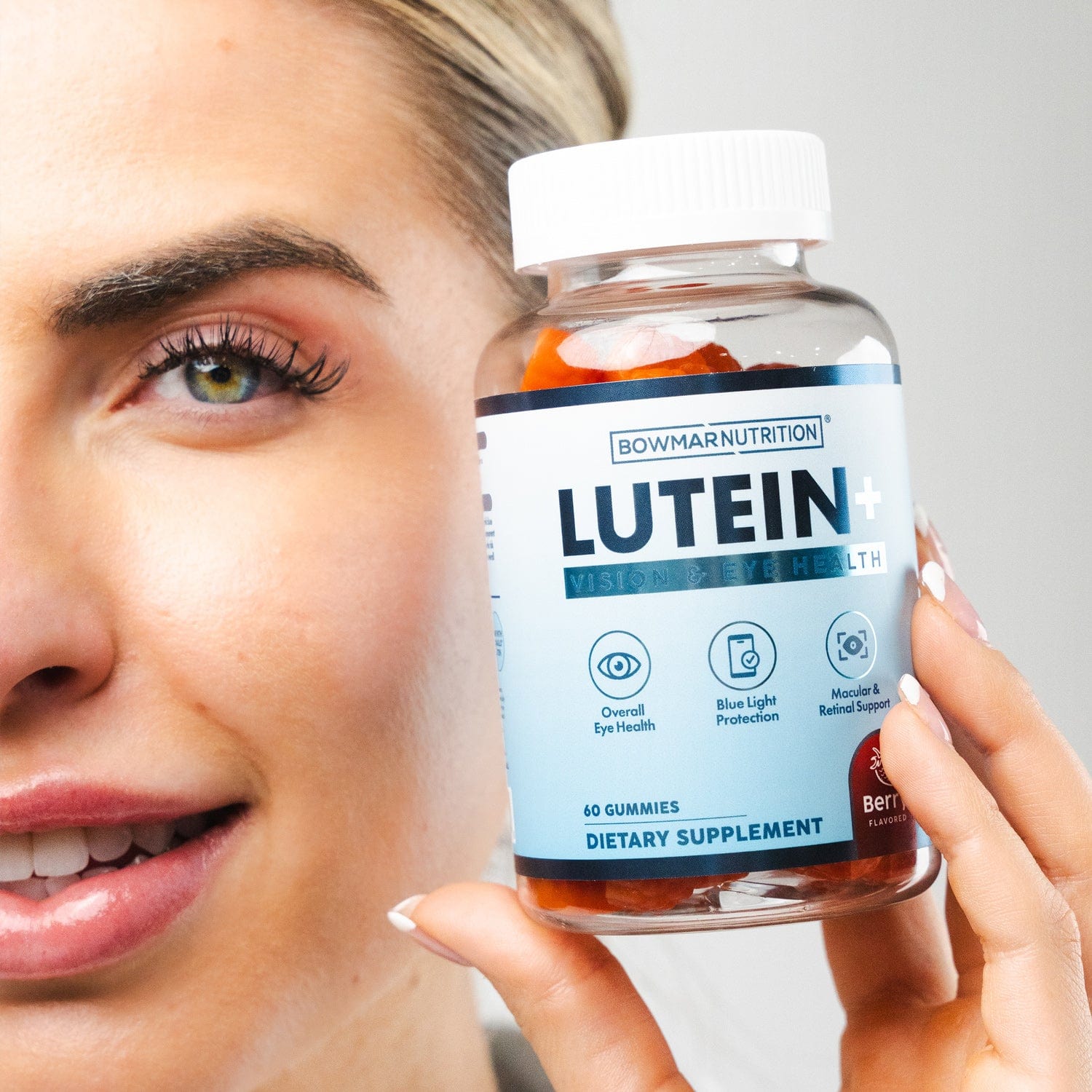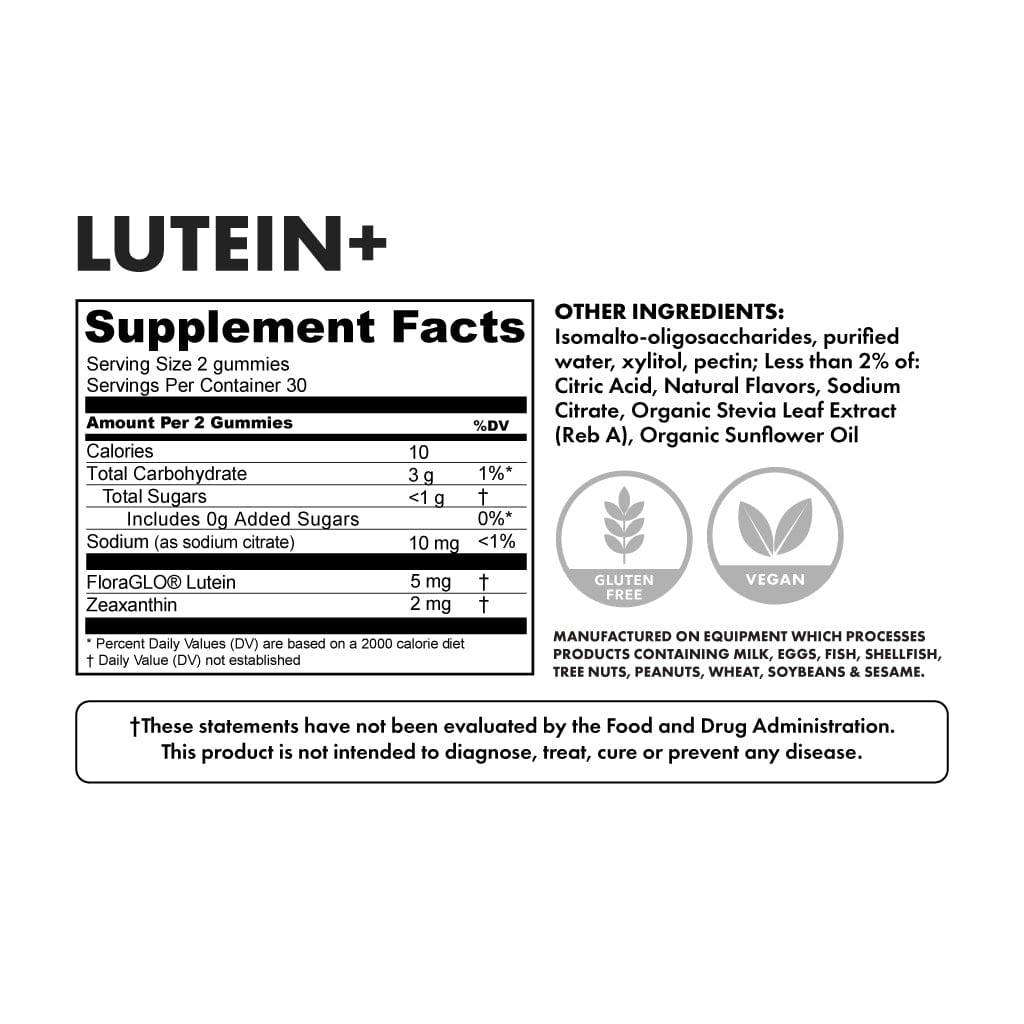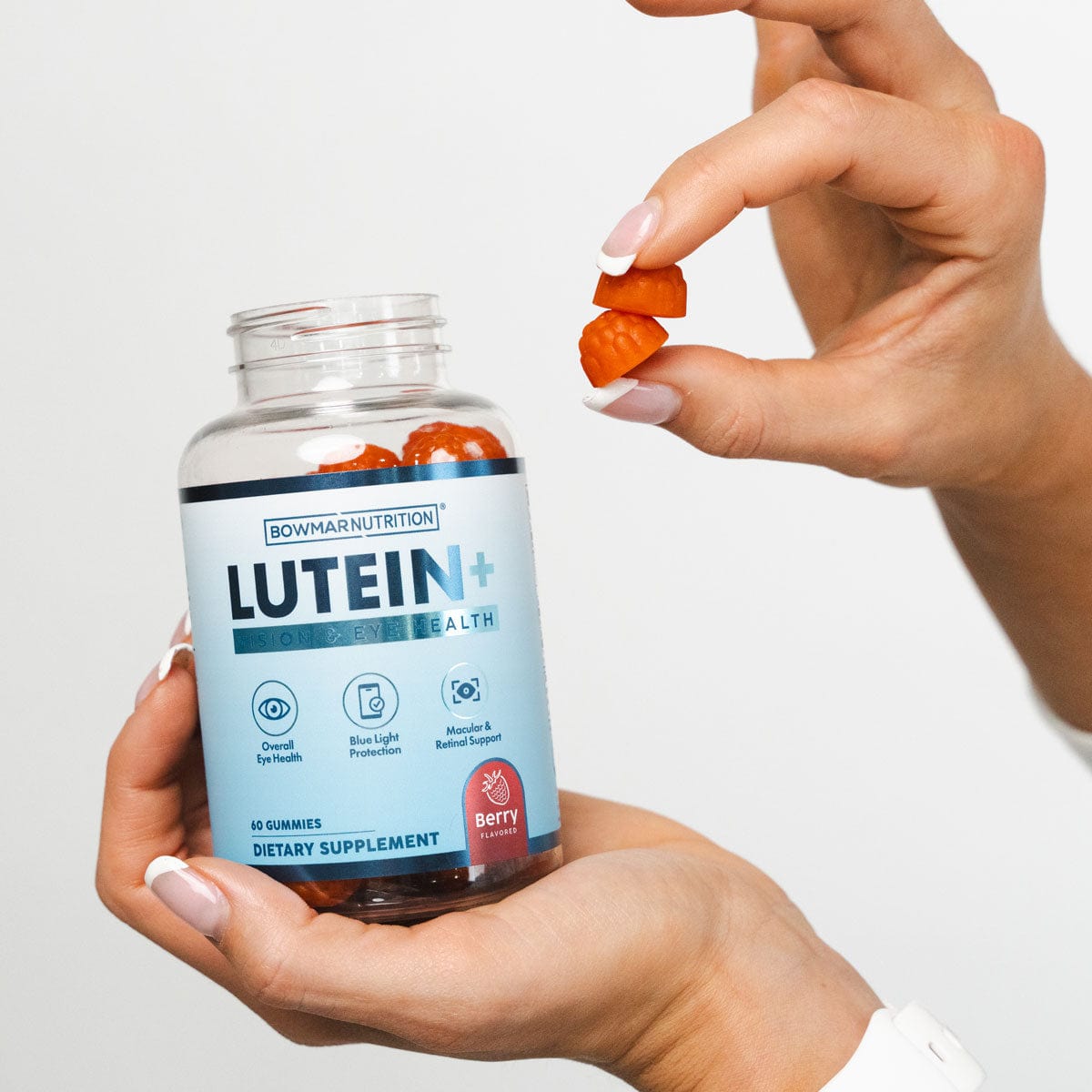







Lutein+ Gummies
- All-natural and artificial-free gummies that promote long term vision wellness for all ages
- Made with FloraGLO® Lutein for optimal absorption
- Fortifies eyes, improves cognitive abilities, and promotes skin elasticity and hydration
Goes well with
Product Benefits
Anyone Who Looks at a Screen
Lutein and zeaxanthin isomers — known as macular carotenoids — are natural filters of high-energy blue light.
Reducing your Absorption of Blue Light Will Help:
- Effectively regulate our sleep-wake cycle and indirectly support mental health
- Promote healthier sleep patterns and overall well-being
- Improve hormone regulation and alertness
- Reduce headaches
- Improve focus
- Decrease eye strain and eye damage
Pregnant and Breastfeeding Women
No other lutein brand worldwide has more scientific publications supporting its use. FloraGLO® Lutein has 15 publications covering pregnancy, breastfeeding, and preterm or term infants. Unlike some forms of Lutein on the market, FloraGLO® Lutein provides the same readily absorbed Lutein as everyday foods like spinach and kale.
Lutein and zeaxanthin are transferred from pregnant mom to the baby and deposited in specific areas of the fetal body. Lutein and zeaxanthin are present in the developing fetus' retina at 17 to 22 weeks. The presence of these nutrients at early stages of life, along with their higher concentration compared to other carotenoids, suggests they play a role in eye and brain development and protection. When maternal diet is an insufficient source, the case can be made for adding these important carotenoids in prenatal supplementation.
After the baby is born, Lutein and zeaxanthin continue to be important major carotenoids in breast milk. Lutein and zeaxanthin are preferentially secreted in breast milk, and their levels are proportional to maternal intake. Furthermore, the relative level of carotenoids in infants' plasma has been found to match the level in breast milk. When diet falls short, supplementation for the breastfeeding mother may be a valuable option.
Infants
In addition to being found in the retina, Lutein represents a majority of the infant brain's carotenoids. When comparing the contribution of Lutein and zeaxanthin in the infant diet (17% of carotenoids) compared to the level in the infant brain (74% of carotenoids),22 it is clear these nutrients are preferentially deposited.
Higher maternal Lutein and zeaxanthin plasma concentrations at delivery were associated with a lower likelihood of poor distance-visual insight later in the child's life.
The presence of Lutein and zeaxanthin in the macula during the early stage of life is essential, considering that children are particularly susceptible to the potentially damaging effects of excessive light exposure (solar light or artificial LED light) due to their eye immaturity and the complete transparency of the ocular lens to light.
Formula for Infants
FloraGLO® Lutein sets the standard for supplemental Lutein regarding efficacy, safety, and credibility. FloraGLO® Lutein is the only brand that is Generally Recognized as Safe (GRAS) in the US for use in term and pre-term infant formula.
School-Aged Kids (study by Dr Khan)
Lutein and zeaxanthin levels in the eye, as measured by Macular Pigment Optical Density (MPOD), are significantly correlated with levels in the brain.
MPOD is related to measures of cognitive control and relational memory among school-aged children.
Children with greater MPOD have also been shown to have higher performance on academic achievement tests.
The results revealed that children with higher MPOD exhibited fewer errors while reconstructing previously studied spatial layouts of items, indicating that MPOD was related to greater relational memory performance. The discovery that children's MPOD was related to hippocampal performance is vital because relational memory supports constructing a flexible knowledge base critical for children's academic success.
Related Blog Posts
Loading related blog posts...
If you have any questions, you are always welcome to contact us. We'll get back to you as soon as possible, within 24 hours on weekdays.
Shipping Information
Free standard shipping (3-7 business days) is available for the contiguous 48 US states for orders over $75.
International shipping cost does not include import fees, customs, duties or value added taxes (VAT) by default. Please refer to your tracking number for your shipment expectations. Shipping times and cost vary from country to country, all costs will be calculated at checkout before paying. International orders ship free for orders over $300 USD.
Customer Support
Bowmar Nutrition’s business hours are Monday-Friday, 9:00am-5:00pm EST. We do our best to get back to our customers on nights and weekends, however we kindly ask you to give us up to 24 hours for a response, although it is likely you'll receive a reply much sooner than that.
Click here to contact us



